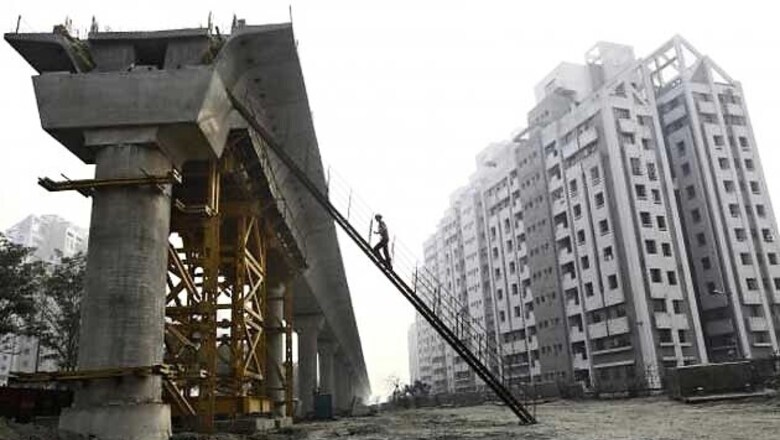
views
New Delhi: Taken at face value, India on Monday became the fastest growing major economy in the world after its statisticians changed the way they measure Asia's third-largest economy and showed it clocked faster growth than China in the December quarter.
It marks a dramatic turnaround for an economy that a fortnight ago was assumed to be struggling to gain momentum under Prime Minister Narendra Modi's reform-minded government. Prior to Modi's election last May, the economy had endured its weakest phase of growth since the 1980s.
The statistical recovery is in large measure due to changes both in the way authorities calculate gross domestic product (GDP) and the base year.
Under the new method, the economy expanded 7.5 per cent year-on-year during the last quarter, higher than 7.3 per cent growth recorded by China in the latest quarter.
New Delhi also revised up growth for the first half of fiscal 2014/15 to 7.4 per cent from the 5.5 per cent reported earlier and forecast the full-year GDP growth to accelerate to 7.4 per cent from a revised 6.9 per cent a year earlier.
The new estimate is sharply higher than the Reserve Bank of India's (RBI) growth projection of around 5.5 per cent for the year under the old method.
The reading has left economists confounded as it is at odds with other indicators such as industrial production, trade and tax collection figures, which suggest the economy is still suffering from slack.
"The government has itself been saying that tax collections are slow due to a slowdown in the economy, but the other wing of the government is saying that GDP growth has been good," said A. Prasanna, economist at ICICI Securities Primary Dealership Ltd.
"That means either one part of the economy is not taxed or there is an issue with the data."
India now measures GDP by market prices instead of factor costs, to take into account gross value addition in goods and services as well as indirect taxes. The base year has been shifted to 2011/12 from 2004/05 earlier.
The government's statistics department says the new method is more in line with global practices and gives a better picture of economic activity.
But the statistical fog makes it harder for policymakers to assess the size of the fiscal and monetary aid required to help spur even faster growth needed to generate jobs for millions of young Indians entering the labour force.
POLICY CONUNDRUM
Monday's data is key for Finance Minister Arun Jaitley as he drafts the annual budget.
Presenting the 2015/16 blueprint on Feb. 28, Jaitley is widely expected to boost capital spending and offer tax breaks to an under-performing manufacturing sector.
But with GDP data showing the economy suddenly motoring again, the fiscal stimulus could stoke inflation.
RBI Governor Raghuram Rajan, who switched the monetary policy to a new easing cycle in January with the first interest rate cut in 20 months, faces a similar dilemma; whether to lower interest rates again.
"After this number, the RBI will need to understand the dynamics of the high GDP numbers," said Saugata Bhattacharya, chief economist at Axis Bank.
"This pushes back the timeline for rate cuts. Any hope of an off-cycle rate cut in March, even if the budget is consistent with low inflation-driven fiscal policy, does not exist now."
"NOTHING HAS CHANGED"
Despite the statistical adjustments, India's growth outlook has been bolstered by falling oil prices, cooling inflation and Modi's steps to make it easier to do business.
Portfolio investors have pumped more than $7 billion so far this year into the country's financial markets.
The International Monetary Fund (IMF) last month also predicted India would overtake China next year as the fastest growing major economy with 6.5 per cent annual growth compared with 6.3 per cent for China.
However, listless corporate spending and mounting bad loans at Indian banks remain a drag.
While stressed corporate balance sheets are hindering a recovery in private capital spending, rising bad banking assets are making banks wary of lending to companies.
"There is clearly the need to look at the credibility associated with these numbers," said Jyotinder Kaur, principal economist at HDFC Bank. "Nothing on the ground has substantially changed to show that we are out of the trenches."




















Comments
0 comment